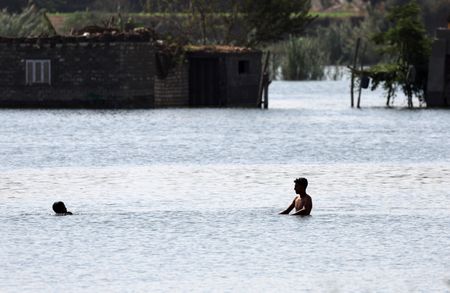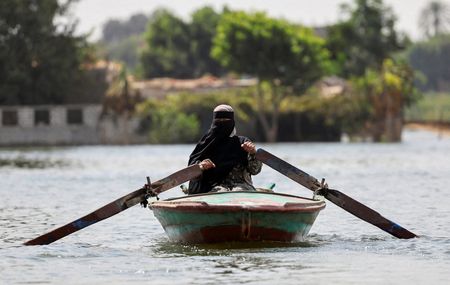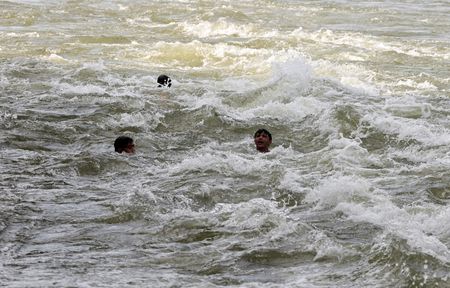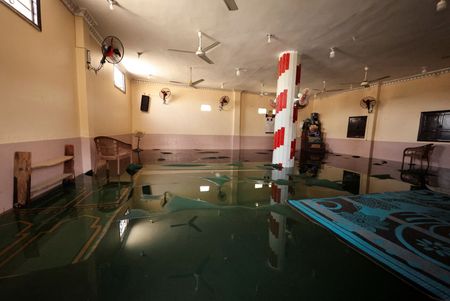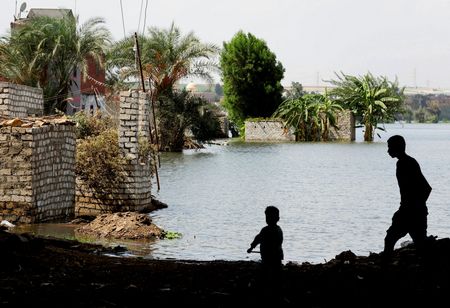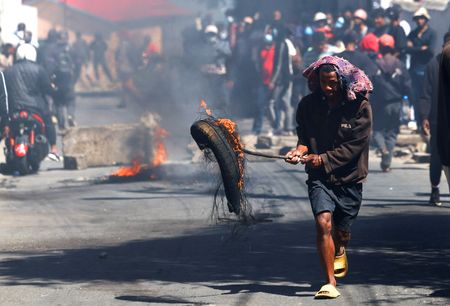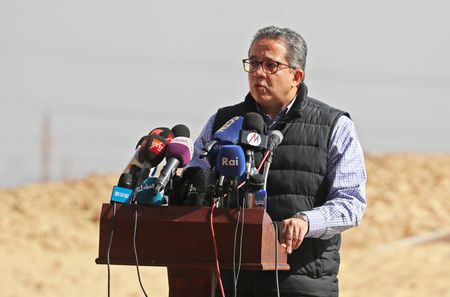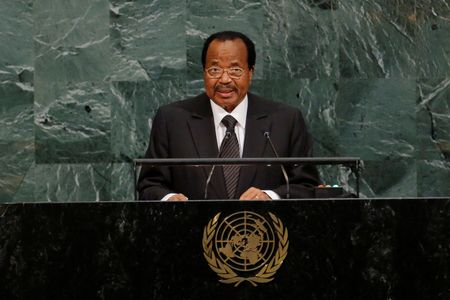By Dina Sakr and Mohamed Ezz
CAIRO (Reuters) -Rising Nile waters inundated homes and fields in northern Egypt over the weekend, forcing residents to move by boat and intensifying a war of words between Cairo and Addis Ababa over whether Ethiopia’s giant Nile dam has worsened seasonal floods.
In the Nile Delta village of Dalhamo, in Menoufia Governorate, some 50 km (31 miles) northwest of Cairo, men paddled wooden boats through narrow lanes where water lapped at the walls of their homes.
“We lost everything,” said fisherman Saied Gameel, standing knee-deep in his flooded house. “The water level is extremely high, much higher this year … before it would rise for two days and then recede.”
FLOODS IN SUDAN DISPLACE THOUSANDS
The Nile has long been affected by seasonal flooding due to monsoon rainfall in the Ethiopian Highlands that usually peaks in July and August. But this year a late-season surge has pushed north from Ethiopia, through Sudan, and into Egypt.
In Sudan, the U.N. migration agency said floods in Bahri, Khartoum state, displaced about 1,200 families last week and destroyed homes, compounding an 18-month war that has crippled the country’s response.
Egypt’s Water Resources and Irrigation Ministry has accused Ethiopia of “reckless unilateral” operation of its Grand Ethiopian Renaissance Dam, saying sharp, unannounced swings in water releases after the dam’s September 9 inauguration helped trigger a “man-made, late flood”.
It said, in a statement on October 3, that discharges jumped to about 485 million cubic metres on September 10 and as high as 780 million on September 27 before easing, straining Sudan’s Roseires Dam and pushing excess water through to Egypt.
Ethiopia, which sees the $5 billion dam as central to its development, rejected Cairo’s claims, describing Egypt’s statement as “malicious and riddled with numerous baseless claims”.
In a statement on October 4, its Water and Energy Ministry said regulated releases from the Blue Nile project had reduced flood impacts and that without it heavy rain “would have caused historic destruction in Sudan and Egypt”.
Ethiopia inaugurated the dam on September 9, with Prime Minister Abiy Ahmed saying it was built “to prosper, to electrify the entire region, and to change the history of black people”, insisting it was “not to harm its brothers”.
The dam is designed to generate 5,150 megawatts of power and hold up to 74 billion cubic metres of water in its lake.
Cairo bitterly opposed the dam from the start, arguing that it violated water treaties dating back to the early part of the last century and poses an existential threat.
‘NOWHERE ELSE TO GO’
Egyptian Prime Minister Mostafa Madbouly said in a press conference on October 2 that authorities had anticipated higher-than-normal flows this month and warned that low-lying tracts in Menoufia and neighbouring Beheira, long encroached by informal building and farming on the river’s floodplain, were at risk.
Health teams were deployed to flooded areas over the weekend.
Back in Dalhamo, Gameel said residents were still waiting for help.
“People were warned before the water rose, but there’s nowhere else for anyone,” he said. “When the water rises, everyone ends up staying on top of their houses.”
(Reporting by Dina Sakr and Mohamed Ezz; Editing by Alex Richardson)

